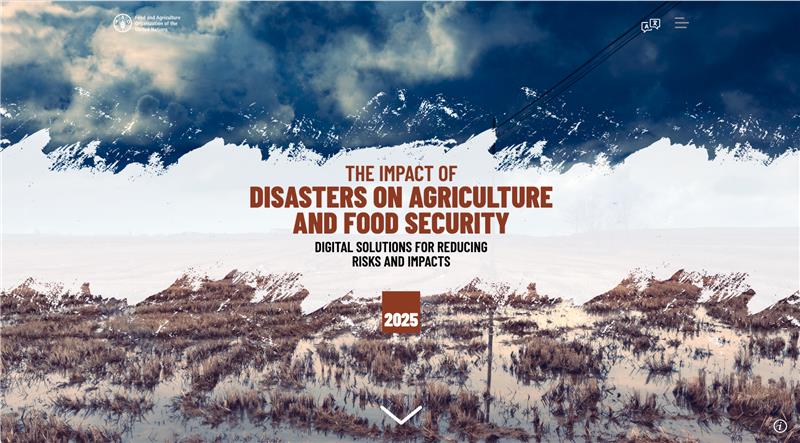The report, The Impact of Disasters on Agriculture and Food Security 2025, highlights how digital technologies are transforming the way farmers, governments, and communities monitor risks, anticipate impacts, and protect livelihoods.
It provides the most comprehensive global assessment to date of how disasters — from droughts and floods to pests and marine heatwaves — are disrupting food production, livelihoods, and nutrition. It also shows how digital innovations are shifting agrifood systems from reactive crisis response toward proactive, data-driven resilience building.
In the foreword, FAO Director-General QU Dongyu emphasizes the transformative role of digital tools: “Digital technologies are already revolutionizing how we monitor risks, deliver early warnings, and support farmers’ decision-making. From the 9.1 million farmers now accessing parametric insurance through digital platforms to communities using our early warning systems to evacuate 90% of at-risk populations before disasters strike, we are witnessing a fundamental shift from reactive response to proactive risk reduction.”
A heavy toll on global food security
Between 1991 and 2023, disasters wiped out:
4.6 billion tonnes of cereals
2.8 billion tonnes of fruits and vegetables
900 million tonnes of meat and dairy products
These losses translate into a reduction of 320 kilocalories per person per day — between 13% and 16% of average energy requirements.
Asia accounts for the largest share of global losses (47%), totaling $1.53 trillion, reflecting both its vast agricultural output and its high exposure to floods, storms, and droughts.
The Americas represent 22% of global losses ($713 billion), driven by recurring droughts, hurricanes, and extreme temperature events affecting major commodity crop systems.
Africa, although showing lower absolute losses ($611 billion), suffers the highest proportional impact, losing 7.4% of its agricultural GDP — the greatest relative burden of any region. In economies where agriculture is a key source of income and employment, such losses have serious implications for food security and rural stability.
RELATED NEWS: Extreme weather costs EU farmers 28 billion euros a year
Small Island Developing States (SIDS) remain among the world’s most vulnerable to disasters such as cyclones, flooding, and sea-level rise. Despite their relatively small agricultural production, disaster-related losses represent a disproportionately high share of their agricultural GDP.
The report also finds that marine heatwaves caused $6.6 billion in losses between 1985 and 2022, affecting 15% of global fisheries. Yet losses in fisheries and aquaculture remain largely invisible in disaster assessments, despite supporting the livelihoods of 500 million people.
Digital technologies transforming risk management
The FAO report identifies digital transformation as a game changer for reducing agricultural disaster risk. Emerging tools — including artificial intelligence (AI), remote sensing, mobile connectivity, drones, and sensors — now enable hyper-local, real-time information that strengthens early warning, advisory services, risk-transfer mechanisms, and anticipatory action.




















